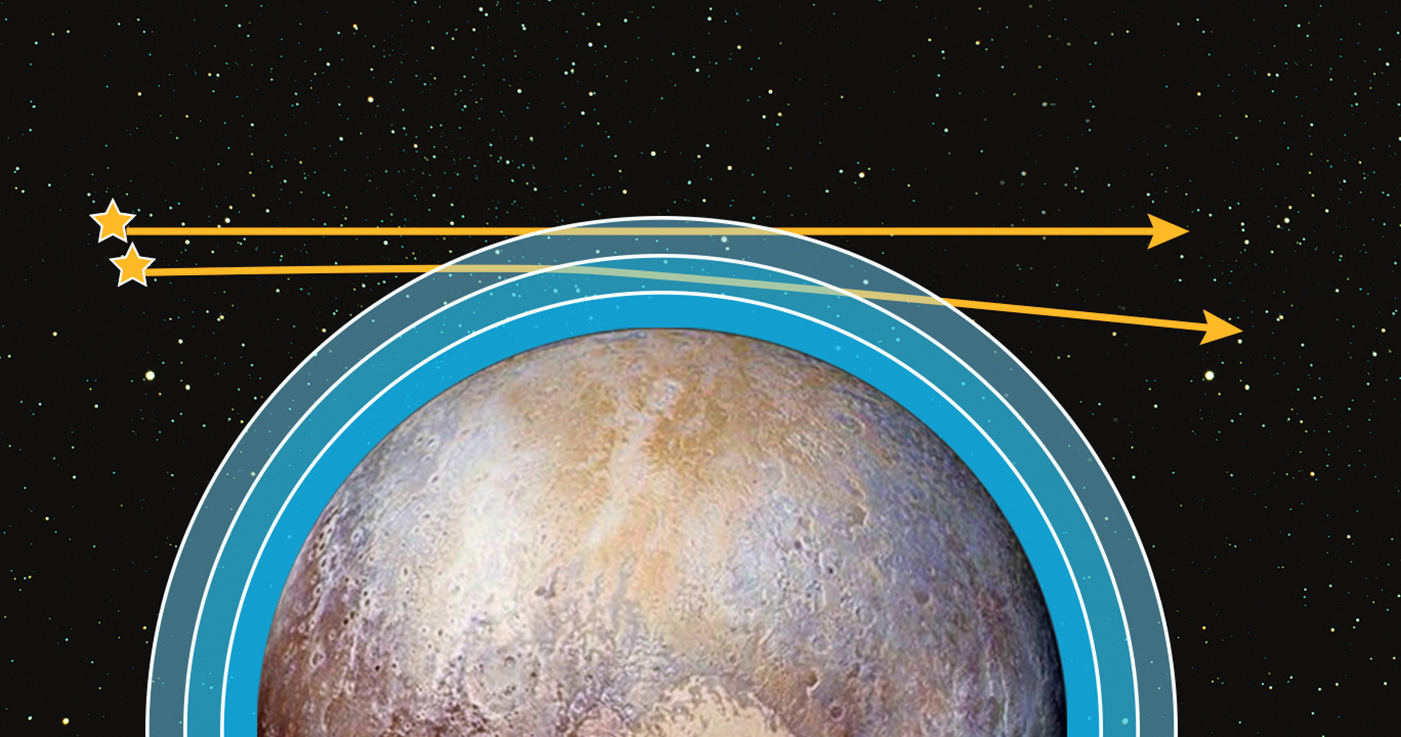
New Horizons accomplished yet another goal in its mission to Pluto. In a news release, NASA reported that the New Horizons team has successfully observed stellar occultations by ultraviolet stars for the first time, confirming information regarding the dwarf planet’s atmosphere.
An occultation occurs when a body within our solar system passes over an object from a more distant place, blocking incoming light from it. The main reason for observing stellar occultations is that they can be used to probe ring systems and atmospheres in the outer solar system with spatial resolutions of a few kilometers-several orders of magnitude better than the resolution of any other Earth-based method.

In this case, New Horizons “watched” as two ultraviolet stars passed behind Pluto. The light coming from them dimmed as they passed deeper through, being absorbed by various gases such as nitrogen, and hydrocarbons (methane and acetylene), and hazes.
These results confirm findings from a previous solar occultation, that the upper atmospheric temperature is as much as 25 percent colder and thus more compact than what scientists predicted before New Horizons’ encounter. This also confirms, albeit indirectly, the result from analysis and modeling of the solar observation that the escape rate of nitrogen is about 1,000 times lower than expected before the flyby.